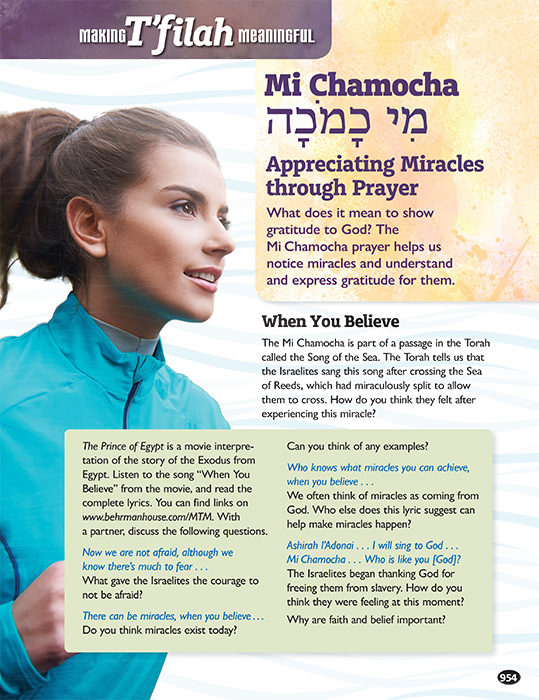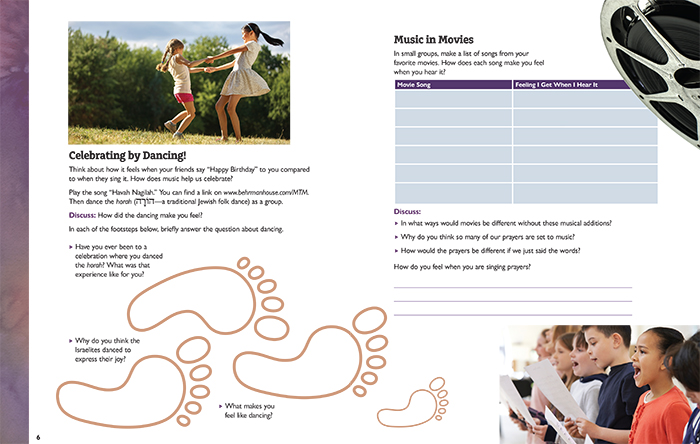Appreciating Miracles Through Prayer: How "Making T'filah Meaningful" Explores Mi Chamocha
Appreciating Miracles Through Prayer: How "Making T'filah Meaningful" Explores Mi Chamocha
Teaching t'filah (prayer) can be one of the most challenging arenas in Jewish education. There's the Hebrew itself, the melodies, the when, where, and how of praying. Finding ways to address the underlying questions - Why do we pray? What do we mean with these words? - can lead to valuable learning as students become both fluent in the prayers and personally connected to their meaning.
Making T'filah Meaningful, a new series of supplemental materials, digs into those underlying questions to understand prayer in a new way.
For example, Mi Chamocha, one of the 8-page booklets available in the series, explores the prayer as a way to help us notice the miracles in our lives and express gratitude for them.

In an activity called "When I Believe," students imagine what it must have been like to watch the Sea of Reeds split. By considering what it might be like to experience a miracle, they also begin to articulate the role that faith and belief play in Judaism. Students read the lyrics to the song from The Prince of Egypt:
"Who knows what miracles you can achieve, when you believe..."
They then discuss the role that humans can play in making miracles happen, such doctors who heal people by providing the right medicine, which is in line with the Jewish ideas that we are God's partners in creating a better world.
Another activity has students conduct a scavenger hunt through a siddur for references to God taking the Israelites from Egypt, which leads to questions about whether miracles exist today, and why faith and belief are important.
And another way to delve into Mi Chamocha focuses on activities and a lesson that helps students understand the emotional power of dancing and music, as well as standing up for what you believe in.
This is a sampling of how the Making T'filah Meaningful series connects 5th-7th graders with the ancient prayer words with their modern-day lives. Mi Chamocha is one of the 12 individual booklets in the series, each covering a prayer or group of related prayers that are filled with activities, stories, and questions.
The materials offer educators total flexibility in when and how to use them. Choose only the prayers you want - each package includes five booklets of the same prayer.
Day school educators might use the booklets as preparation for daily communal t'filah time, for example, or as an alternative to traditional t'filah.
Congregational schools educators can use the booklets to supplement existing Hebrew programs and enrich t'filah time. Making T'filah Meaningful does not replace Hebrew and t'fila learning, but rather enhances the experience by helping students connect with the prayers.
A Lesson Plan Manual contains 36 complete lessons - three for each prayer booklet - plus optional activities for digging deeper into topics as time and resources allow. It also includes tips for addressing challenging ideas, such as God, tips for helping students with special needs, and ideas for engaging students' families in the learning. Educators can get a review copy of the Making T'filah Meaninful Lesson Plan Manual, or of any booklet, for a 30% discount. Just mention "review copy" when you order (limit one copy per school).
To learn more about Making T'filah Meaningful, a list of prayers in the series, and online prayer resources, click here.

